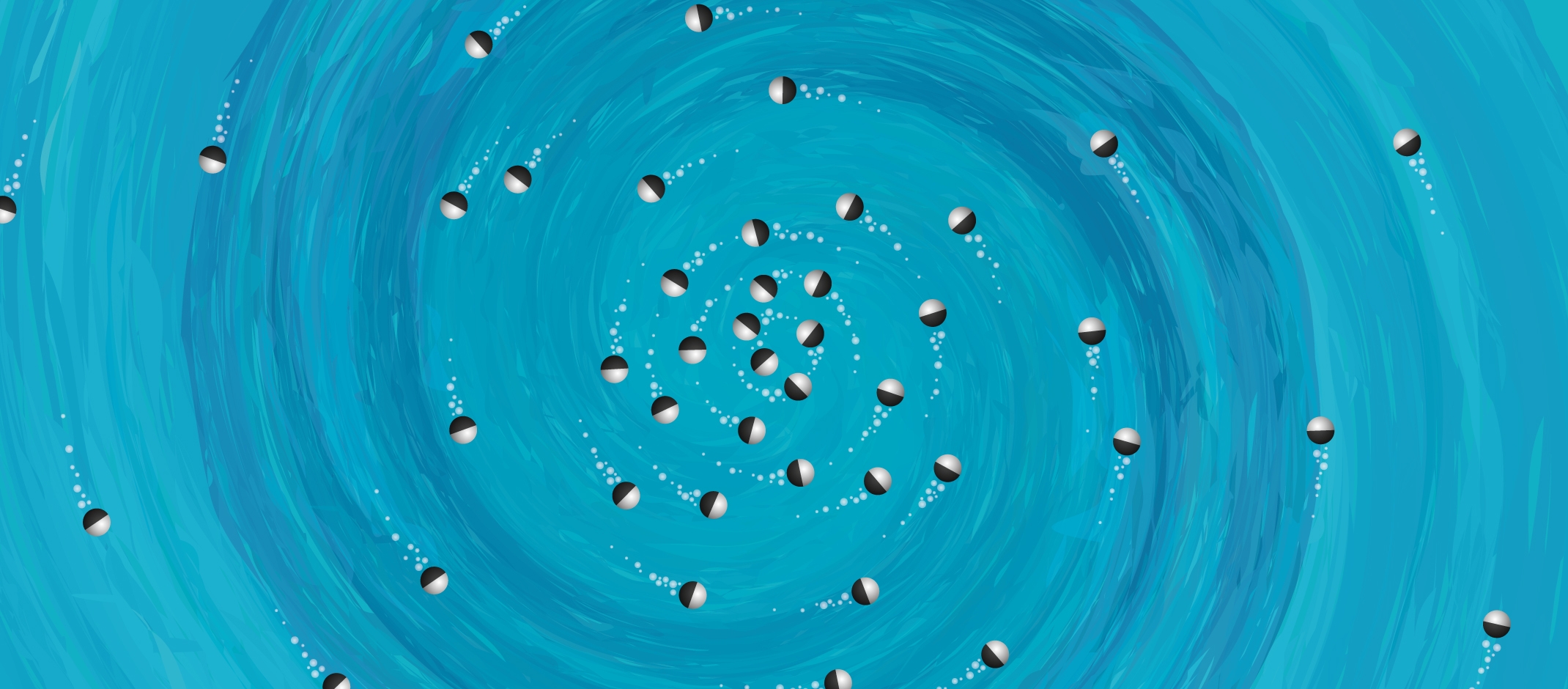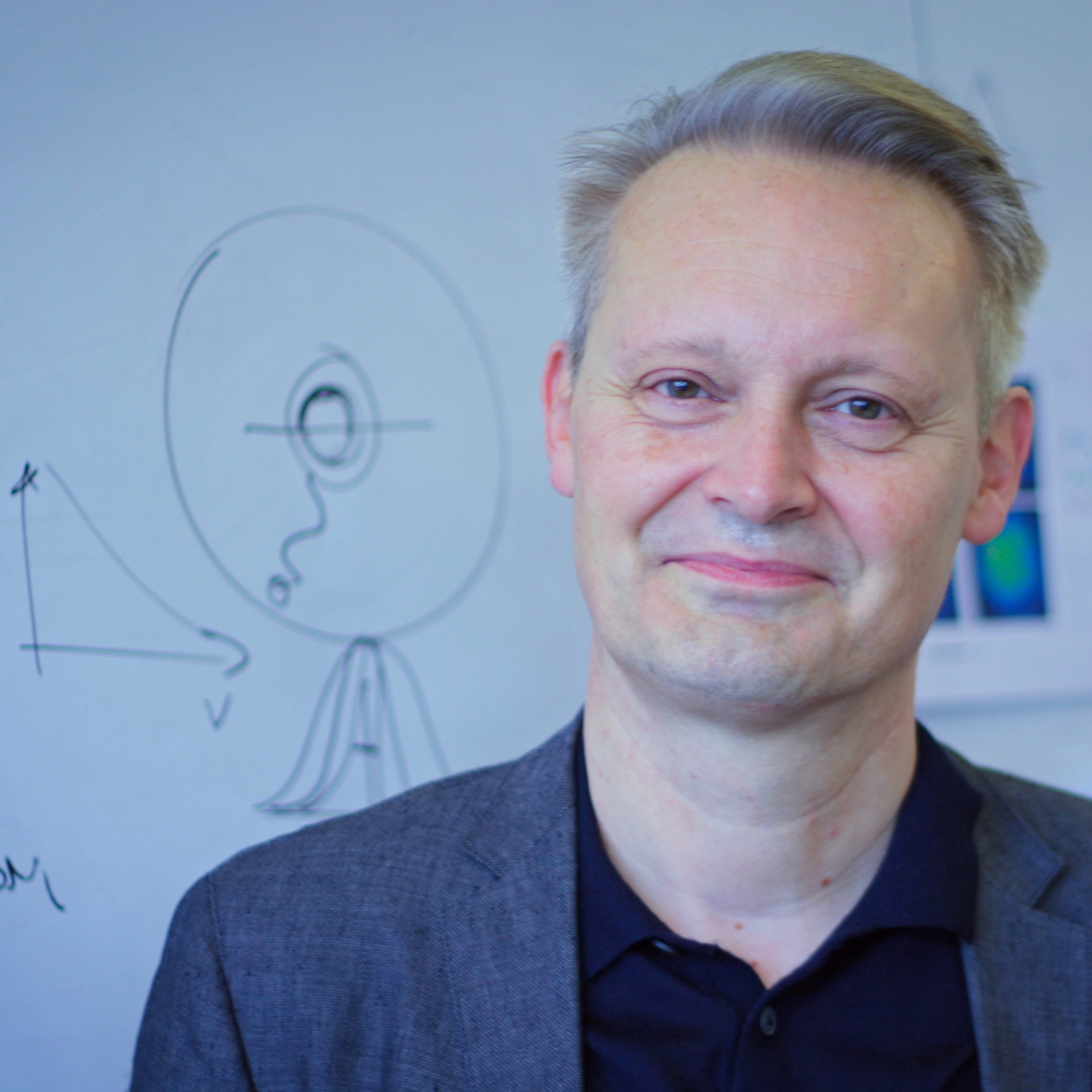Physics principle explains order and disorder of swarms

Current experiments support the controversial hypothesis that a well-known concept in physics – a “critical point” – is behind the striking behaviour of collective animal systems. Physicists from the Cluster of Excellence “Centre for the Advanced Study of Collective Behaviour” at the University of Konstanz showed that light-controlled microswimming particles can be made to organize into different collective states such as swarms and swirls. By studying the particles fluctuating between these states, they provide evidence for critical behaviour—and support for a physical principle underlying the complex behaviour of collectives. The research results were published in the scientific journal "Nature Communications".
Animal groups exhibit the seemingly contradictory characteristics of being both robust and flexible. Imagine a school of fish: hundreds of individuals in perfect order and alignment can suddenly transition to a convulsing tornado dodging an attack. Animal groups benefit if they can strike this delicate balance between being stable in the face of “noise” like eddies or gusts of wind, yet responsive to important changes like the approach of a predator.
Critical transition
How they achieve this is not yet understood. But in recent years, a possible explanation has emerged: criticality. In physics, criticality describes systems in which a transition between states – such as gas to liquid – occurs at a critical point. Criticality has been argued to provide biological systems with the necessary balance between robustness and flexibility. “The combination of stability and high responsiveness is exactly what characterizes a critical point,” says the study’s lead author Clemens Bechinger, Principal Investigator in the Centre for the Advanced Study of Collective Behaviour and Professor in the Department of Physics at the University of Konstanz, “and so it made sense to test if this could explain some of the patterns we see in collective behaviour.”

“By demonstrating a close link between collectivity and critical behaviour, our findings not only add to our general understanding of collective states but also suggest that general physical concepts may apply to living systems”
Professor Clemens Bechinger, Principal Investigator in the Centre for the Advanced Study of Collective Behaviour and Professor in the Department of Physics at the University of Konstanz
The hypothesis that collective states are hovering near critical points has been studied in the past largely through numerical simulations. In the new study published in Nature Communications, Bechinger and his colleagues have given rare experimental support to the mathematical prediction. “By demonstrating a close link between collectivity and critical behaviour, our findings not only add to our general understanding of collective states but also suggest that general physical concepts may apply to living systems,” says Bechinger.
Experimental evidence
In experiments, the researchers used glass beads coated on one side by a carbon cap and placed in a viscous liquid. When illuminated by light, they swim much like bacteria, but with an important difference: every aspect of how the particles interact with others – from how the individuals move to how many neighbours can be seen – can be controlled. These microswimming particles allow the researchers to eschew the challenges of working with living systems in which rules of interaction cannot be easily controlled.
“We design the rules in the computer, put them in an experiment, and watch the result of the interaction game,” says Bechinger.
https://www.youtube.com/watch?v=rTHx1YExU_kExperimental snapshot of a counterclockwise rotating swirl of 50 particles, with their trajectories shown in green lines. | Credit: Tobias Bäuerle
But to ensure that the physical system bore a resemblance to living systems, the researchers designed interactions that mirrored the behaviour of animals. For example, they controlled the direction that individuals moved in relation to their neighbours: particles were programmed either to swim straight towards others in the main group or to deviate away from them. Depending on this angle of movement, the particles organized into either swirls or disordered swarms. And incrementally adjusting this value elicited rapid transitions between a swirl and a disordered but still cohesive swarm. “What we observed is that the system can make sudden transitions from one state to the other, which demonstrates the flexibility needed to react to an external perturbation like a predator,” says Bechinger, “and provides clear evidence for a critical behaviour.”
“Similar behaviour to animal groups and neural systems”
This result is “key to understanding how animal collectives have evolved,” says Professor Iain Couzin, co-speaker of the Centre for the Advanced Study of Collective Behaviour and Director of the Department of Collective Behavior at the Konstanz Max Planck Institute of Animal Behavior. Although not involved with the study, Couzin has worked for decades to decipher how grouping may enhance sensing capabilities in animal collectives.

“The particles in this study behave in a very similar way to what we see in animal groups, and even neural systems. We know that individuals in collectives benefit from being more responsive, but the big challenge in biology has been testing if criticality is what allows the individual to spontaneously become much more sensitive to their environment.”
Professor Iain Couzin, co-speaker of the Centre for the Advanced Study of Collective Behaviour and Director of the Department of Collective Behavior at the Konstanz Max Planck Institute of Animal Behavior
Says Couzin: “The particles in this study behave in a very similar way to what we see in animal groups, and even neural systems. We know that individuals in collectives benefit from being more responsive, but the big challenge in biology has been testing if criticality is what allows the individual to spontaneously become much more sensitive to their environment. This study has confirmed this can occur just via spontaneous emergent physical properties. Through very simple interactions they have shown that you can tune a physical system to a collective state – criticality – of balance between order and disorder.”
Application areas
By demonstrating the existence of a link between collectivity and critical behaviour in living systems, this study also hints at how the intelligence of collectives can be engineered into physical systems. Beyond just simple particles, the finding could assist with designing efficient strategies of autonomous microrobotics devices with on-board control units. “Similar to their living counterparts, these miniature agents should be able to spontaneously adapt to changing conditions and even cope with unforeseen situations which might be accomplished by their operation near a critical point,” says Bechinger.
